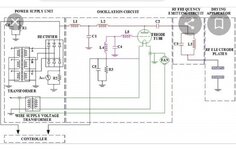santoshtambe76@yahoo.com
Newbie level 4
Hello All
I want design AC ( universal input 90Vac to 230Vac) to AC converter of 5000Vrms sine shape, 500Khz frequency and 500Watt power.
Can anyone suggest , how to design/topology for it ?
I want design AC ( universal input 90Vac to 230Vac) to AC converter of 5000Vrms sine shape, 500Khz frequency and 500Watt power.
Can anyone suggest , how to design/topology for it ?
